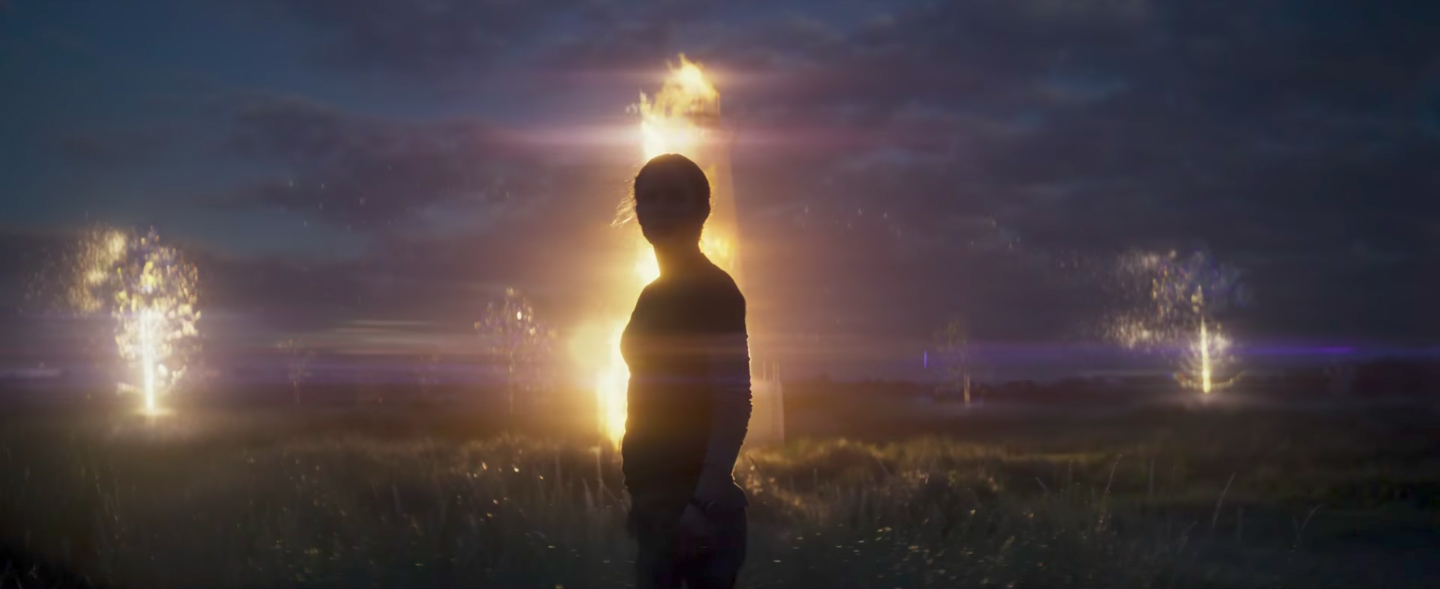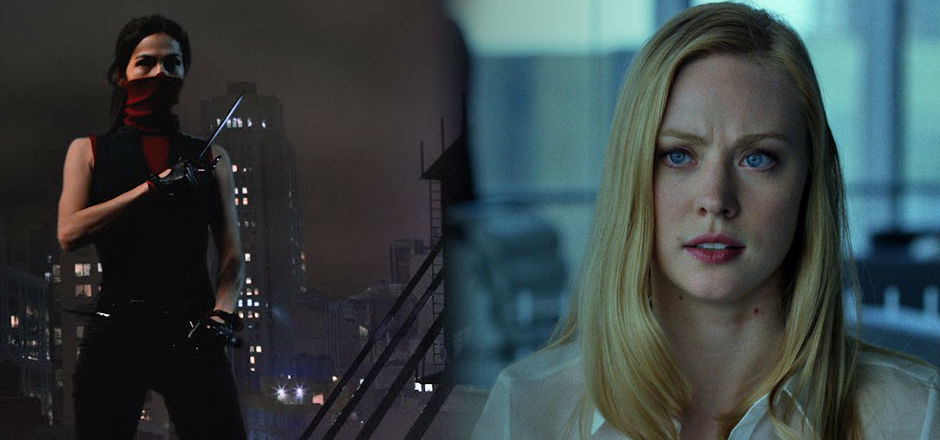Warning! This article contains spoilers for the 2018 film Tomb Raider, the 2013 game of the same name, and 2015’s Rise of the Tomb Raider. Please note that uses of Tomb Raider are in reference to the 2018 film, while Tomb Raider (2013) will refer to the video game.
—
In 1949, Joseph Campbell published The Hero With a Thousand Faces, a comparative analysis of hero’s journeys throughout global mythology. It’s a work that’s thrived over the past 69 years: the hero’s journey has traveled from high school classrooms to the once uncharted reaches of George Lucas’ mind, inspiring the journey of a certain farmboy with a laser sword. Campbell’s hero’s journey is clear not only in the ancient epics of Gilgamesh and Odysseus, but also in those of Luke Skywalker and Indiana Jones. It’s a fraternity that can count Bilbo and Frodo Baggins among its members, as well as Harry Potter, Peter Parker, Neo, and Simba.
2018 hasn’t been a stranger to initiating new members into Campbell’s fraternity. T’Challa’s hero’s journey in the exemplary Black Panther is already history, but this March has introduced us to another, more subversive initiate into a largely boy’s club: Tomb Raider’s Lara Croft.
This is not the Lara we’ve come to know from 22 years of Tomb Raider games. Still grappling with the disappearance of her father, Richard Croft, seven years prior, the Lara to whom we’re introduced is a bike courier living in a cramped flat in London. To Lara, whose mother died when she was young, her father’s departure is an abandonment. To cope, Lara’s shirked the propriety and privileges of her name, and abandoned aspirations of higher education and anything more than a living income. When Lara finds herself sitting in a police station after a desperate grab for cash, it’s hard not to agonize over the pipeline poster child she’s become – until Ana, an associate of her father’s, shows up to bail her out.
It’s Ana’s machinations that set Lara’s hero’s journey in motion: sign the papers declaring your father legally dead, she says, and move on. In a Japanese puzzle left for her in her father’s effects, however, Lara finds the information she needs to track her father’s final journey. Determined to find him alive, she sets a course for Yamatai, an unmarked island in the Devil’s Sea, where her father disappeared looking for the tomb of the supernatural queen Himiko.
Those familiar with Tomb Raider (2013) will know both Yamatai and Himiko. The game, a lauded franchise reboot, centers both. It’s natural that the movie, similarly meant to reboot the Tomb Raider film franchise, shares some of the same given circumstances. It’s a movie that isn’t limited to its namesake either though, also borrowing elements from the game’s 2015’s sequel, Rise of the Tomb Raider. While Tomb Raider borrows Tomb Raider (2013)’s setting, it borrows Lara’s struggle to reconcile her father’s death from Rise, which finds her investigating Kitezh, the final site her father was researching before his untimely death. Tomb Raider is a synthesis of the first two parts of Lara’s origin story, Lara’s determination to find her father the movie’s keystone, this time set on Yamatai in a frantic search for the tomb of Himiko.
Tomb Raider (2013) and Rise are also blended to create Tomb Raider’s antagonist, Mathias. In Tomb Raider, he acts not as the leader of his own cult, the Solarii Brotherhood, as he did in Tomb Raider (2013), but instead serves as an emissary of Rise of the Tomb Raider’s Order of Trinity. Mathias, played by Walton Goggins, is still a worthy antagonist, and acts as a near-perfect foil for Lara: while Lara’s motivation for coming to Yamatai is to find and be reunited with her father, Mathias’ motivations on Yamatai are to find Himiko’s tomb, so that his superiors at Trinity will let him return home to his daughters. Well-matched with Lara in motivation, Goggins’ Mathias is clear about the dangers of the path Lara is courting. His recklessness has become ruthlessness has become mercilessness, and his determined logic has become carelessness. Goggins mixes Mathias’ decayed sense of morality with a heavy side of creepiness, a sobering reminder that even men with daughters of their own can be not only corrupt, but also predators themselves.
Ana, too, played with a brusque chill by Kristin Scott Thomas, is an import from Rise. If it seems like a small part for Thomas, rest assured knowing she has a much larger part to play down the line. Ana’s secrets, as revealed in the final chapter of Rise, are so revealed at the end of the movie.
Perhaps the best nods to Tomb Raider (2013) are the vestiges of gameplay. From the moment Lara sets foot on Yamatai, Tom Hokenborg’s score is overlaid with sounds of the game’s own Yamatai. Chimes players-turned-viewers will associate with shrines to Himiko shimmer in the background as Lara stalks through the undergrowth, accompanied by gurgle of a the hidden creeks that traverse 2013’s Yamatai. In one shining nod, Lara hears a “set the charges here,” followed by a “sure boss” from a Trinity mercenary that’s pulled directly from the game’s campaign.
More overtly, the film draws the majority of its action sequences from the game’s most iconic moments. Lara’s arrival to Yamatai, after a stint in the Devil’s Sea on the ship Endurance, is an adrenaline-filled shipwreck that finds her swinging from metal rod to metal rod, leaping across a capsizing deck, and narrowly avoiding being pummeled into a rock. It’s cringe-inducing, and reminiscent of one of Lara’s many infamous, grisly deaths.
In another scene, Lara navigates being whipped down a river to the head of a waterfall, where she must grab onto and climb a decrepit, wrecked plane for survival, only to find and deploy a parachute, navigating an entire forest canopy as she makes her way to the ground. She escapes, but is impaled by rebar, pulls it out herself, and stumbles forward through the foliage to find Shipwreck Bay. It’s a massive sequence made up of all the greatest action hits of the game compiled into five, nonstop minutes, but it works – and Lara’s made all the stronger for it. It wouldn’t be Tomb Raider if Lara’s weapons – a bow and arrow, a pickaxe, and, yes, dual pistols – didn’t make appearances either, and rest assured they do.
One of the films best scenes, too, is a direct draw from the game. After surviving her parachute crash and rebar lancing, Lara is stalked by a Trinity assassin, sent after her by Mathias. The two grapple in the midst of a thunderstorm, until ultimately, pinned down with his hands around her throat, Lara will almost certainly die – if not for the sizable rock just within reach. It’s a forced binary for Lara, one in which she must kill or be killed, and after a brief scramble, she rises, alive, but forever changed, having killed another human. It’s Lara’s first kill, and not one she can come back from.
It’s a scene imported almost shot-for-shot from the game, and one that was one of the game’s best moments. Too often than not, even in Tomb Raider (2013)’s predecessors, killing is a mindless necessity, a requisite of gameplay that neither player nor protagonist think about. Tomb Raider (2013) forces the player to think about it, and Lara to process it. It’s not something she ever forgets.
The moment becomes one of the best of the film too, played beautifully by Alicia Vikander as Lara. Vikander is a good match for Tomb Raider’s burgeoning Croft, unassuming yet defiant, and sharp even in some of the most dire situations. It’s clear Lara isn’t a role she’s taken lightly; Vikander put in months of training to prepare for her role, and it pays off. Vikander’s Lara may be slight, but she’s physically and mentally strong, and it shows.
Vikander is accompanied by Dominc West as Richard Croft, and Daniel Wu as Lu Ren, captain of the Endurance and another foil to Lara, as his father disappeared sailing Richard to Yamatai. West makes for a satisfactory Lord Croft, believable as a man vacillating between boardrooms and uncharted territory, even if there are perhaps some loopholes in Richard’s methods. Compared to West, Wu makes for a much more dynamic figure in Lara’s life, his quick wit and determination a worthy match for Lara’s own. He’s not a love interest – at least not yet – but he’s Lara’s partner throughout the film, and Wu shines in the role. On a much more macro level, it’s incredible to see an East Asian actor in a leading role in a movie as big as Tomb Raider, not only stepping to the forefront of the film, but also challenging stereotypes about masculinity and attractiveness.
For all its positives, though, Tomb Raider isn’t without its issues. It’s meant to reboot a film franchise based on the game of the same name that rebooted the video game franchise – to great success – but drastically alters the central plot. It was Tomb Raider (2013)’s original plot that played a large role in making the game one with a narrative just as commended as its gameplay, if not more. Tomb Raider (2013) followed Lara on a journey to Yamatai, sure, and chronicled her encounter with Himiko.
Its central conflict, however, was Lara attempting to find her friend Sam, a woman of color kidnapped by the Solarii Brotherhood and a descendant of Himiko. Lara’s relationship with Sam was one of the most heavily discussed aspects of Tomb Raider (2013), namely whether or not it was a platonic or romantic one. Adapting Lara’s narrative to one in which the central conflict is a reunion with her father not only centers a white man in the story, but also does so while actively decentering and thus dismissing Sam, a woman of color. It relegates the only conversations between women to a brief scene at the beginning – though it does pass the Bechdel Test – and Lara’s two conversations with Ana. It sidelines the potential for queer representation, and while Lara doesn’t explicitly have a love interest, there aren’t that many other women or any non-binary folk in her universe. Perhaps it’s something that will change in future movies, but for now Tomb Raider stands alone – and must be judged as such.
Despite its faults, Tomb Raider is a welcome departure from the hero’s journeys of Lara’s predecessors, even her peers in the archaeo-adventure subgenre. The film successfully blends the mysticism of the games and its own cinematic predecessors with science in a way that India Jones and the Crystal Skull, for example, failed at doing… Though it does read a bit as a sister film to Indiana Jones and the Last Crusade. That’s not a bad thing, and rather than ending a franchise, Tomb Raider is beginning its own, wholly new one, leaving Lara to carve out her own name for herself, not in the ruins of Petra but on the fictional island of Yamatai.
The prospect for a franchise is a worthy one, though Tomb Raider runs the chances of falling prey to misleading promotion – the trailers for the movie are nothing like the movie itself – and being released into a field of heavy-hitters. Tomb Raider was released on March 16th, 2018 and stars Alicia Vikander as Lara Croft. Daniel Wu, Dominc West, and Walton Goggins also star. It’s rated PG-13, and has a runtime is 118 minutes, of which I think you’ll enjoy at least 117.






